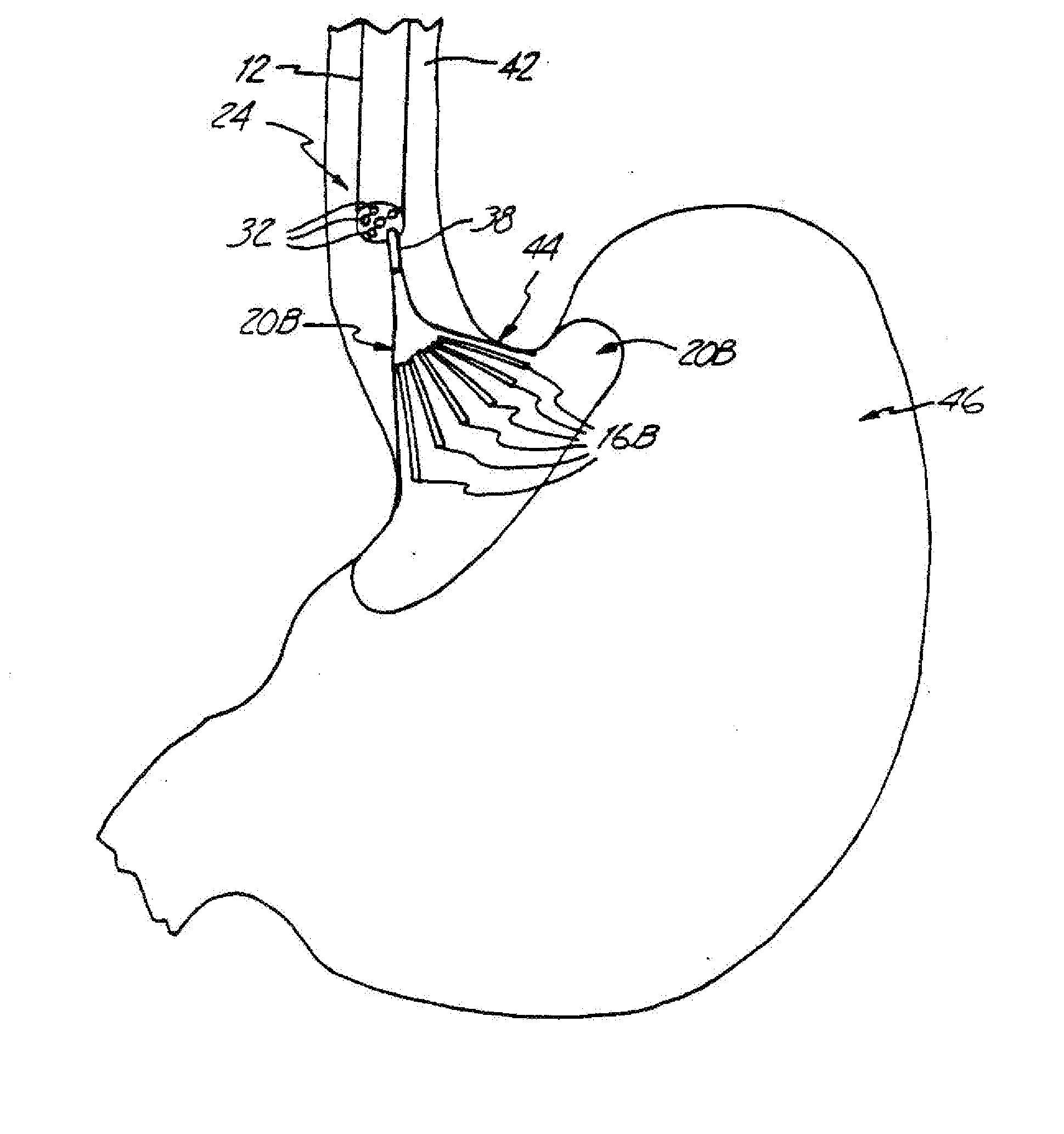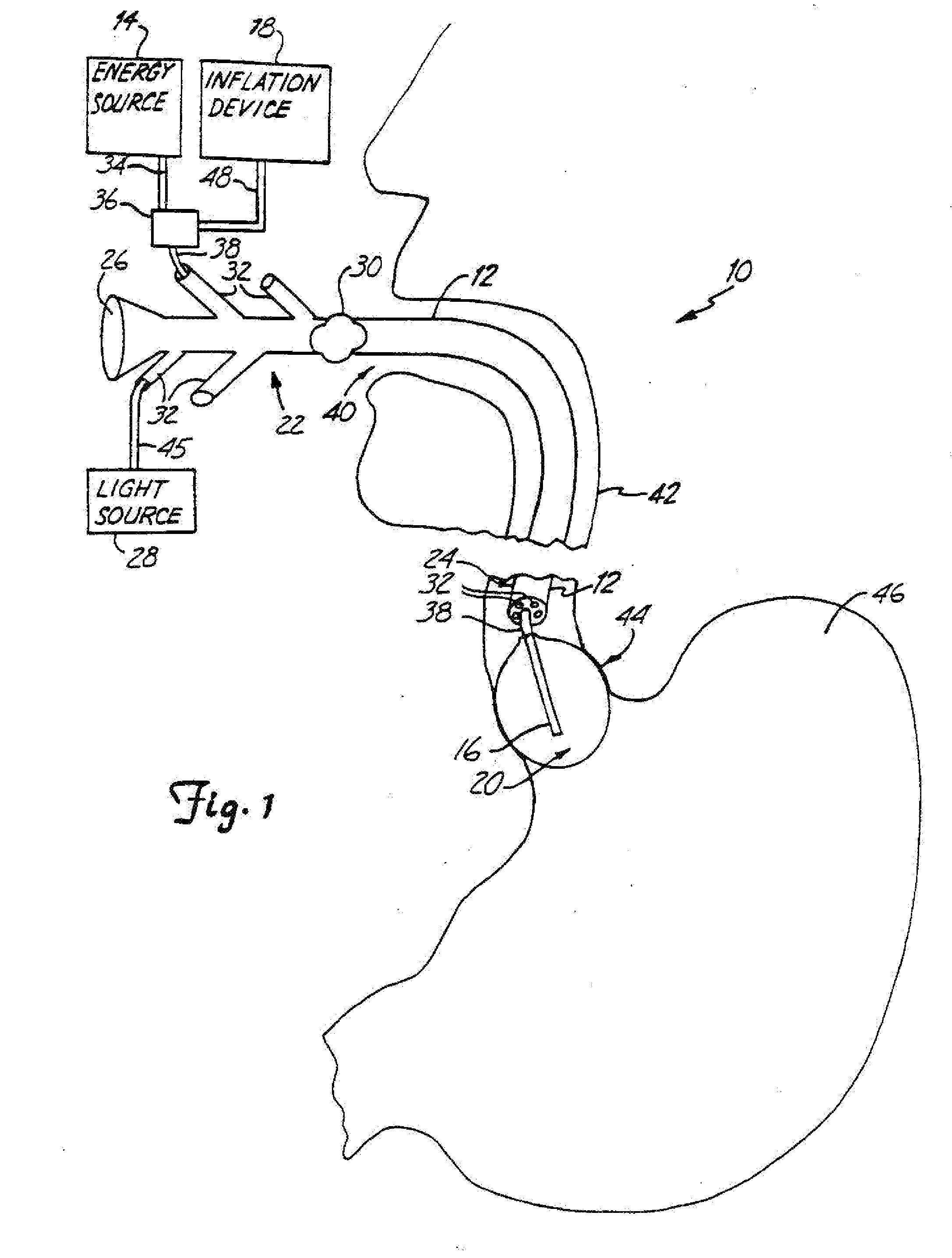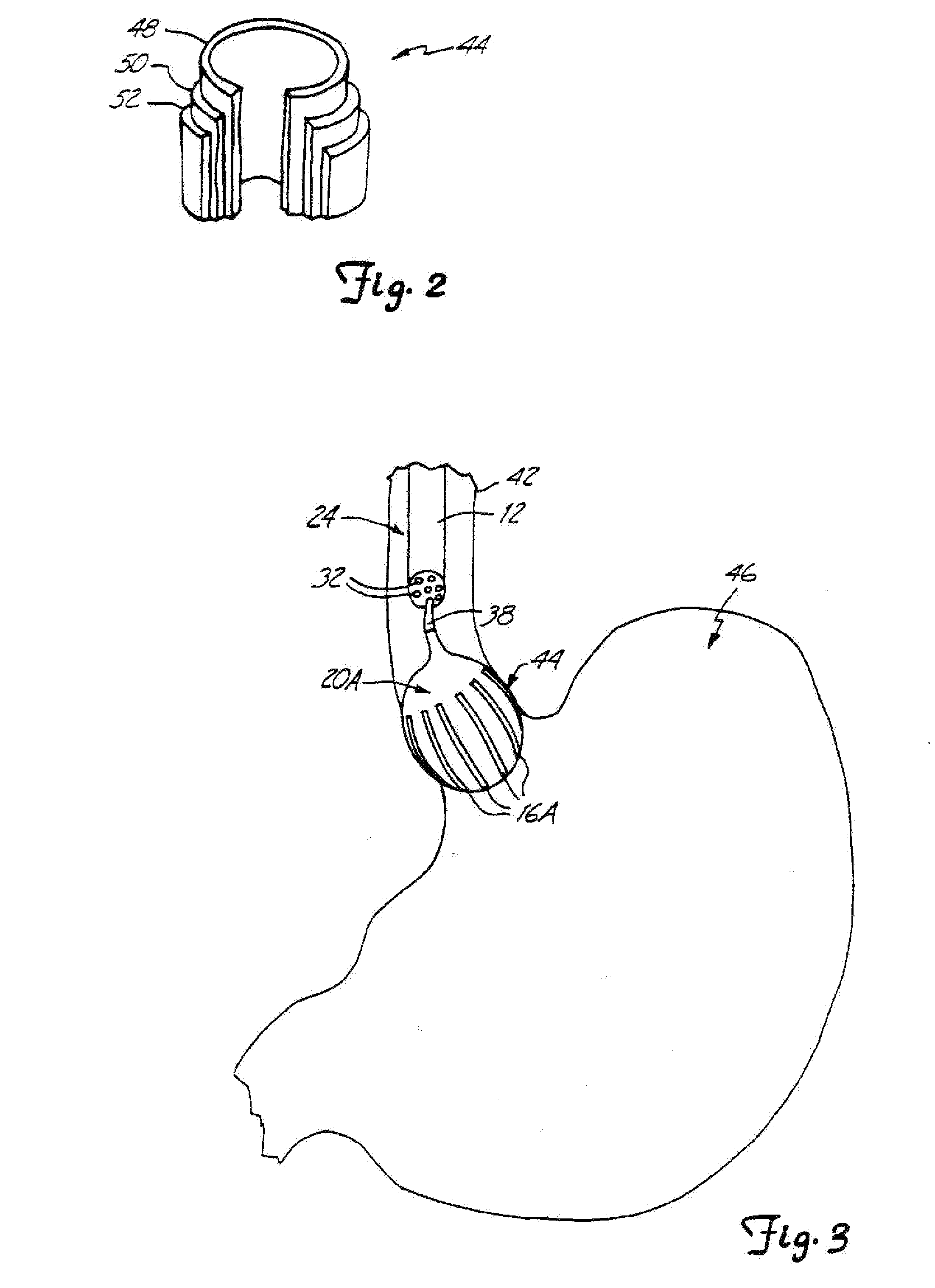Device and method for treatment of gastroesophageal reflux disease
a gastroesophageal reflux disease and device technology, applied in the field of treatment of gastroesophageal reflux disease, can solve the problems of affecting tens of millions of people, and costing billions of dollars to treat, and achieve the effect of preventing reflux
- Summary
- Abstract
- Description
- Claims
- Application Information
AI Technical Summary
Benefits of technology
Problems solved by technology
Method used
Image
Examples
Embodiment Construction
[0016] In FIG. 1, a preferred embodiment of a lower esophageal sphincter (LES) tightening device 10 is shown in use. The LES tightening device 10 comprises an insertion device 12, an energy source 14 and an energy transmitting device 16. As shown in FIG. 1, the LES tightening device 10 could also include an inflation device 18 and a balloon 20.
[0017] In a preferred embodiment, the insertion device 12 is an endoscope as shown in FIGS. 1, 3 and 4. However, workers skilled in the art will recognize that a catheter or other similar device could also be used. As shown in FIG. 1, the insertion device 12 has a proximal end 22 and a distal end 24. Additionally, the insertion device 12 could include an, eye piece 26, a light source 28 and a control means 30. A series of ports 32 provide access from the proximal end 22 to the distal end 24 through lumens located within the interior of the insertion device 12 along its longitudinal access.
[0018] The energy source 14 is located at the proxima...
PUM
 Login to View More
Login to View More Abstract
Description
Claims
Application Information
 Login to View More
Login to View More - R&D
- Intellectual Property
- Life Sciences
- Materials
- Tech Scout
- Unparalleled Data Quality
- Higher Quality Content
- 60% Fewer Hallucinations
Browse by: Latest US Patents, China's latest patents, Technical Efficacy Thesaurus, Application Domain, Technology Topic, Popular Technical Reports.
© 2025 PatSnap. All rights reserved.Legal|Privacy policy|Modern Slavery Act Transparency Statement|Sitemap|About US| Contact US: help@patsnap.com



